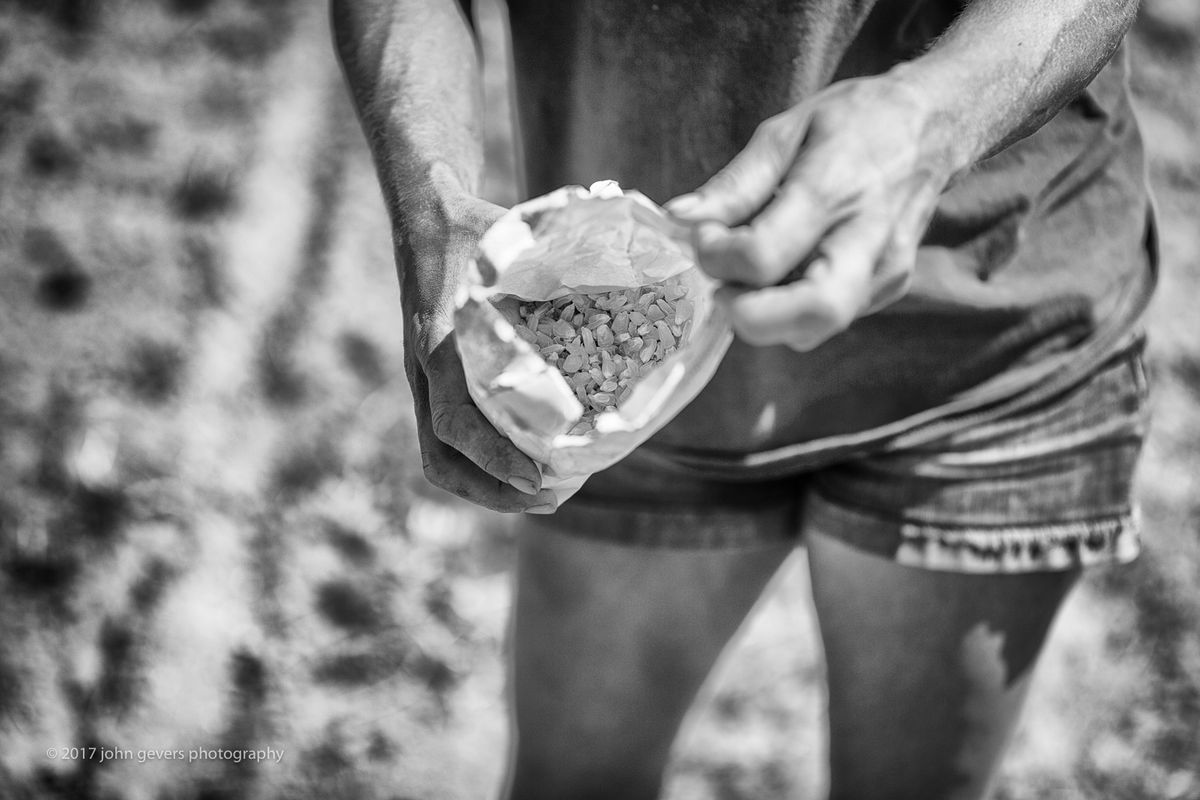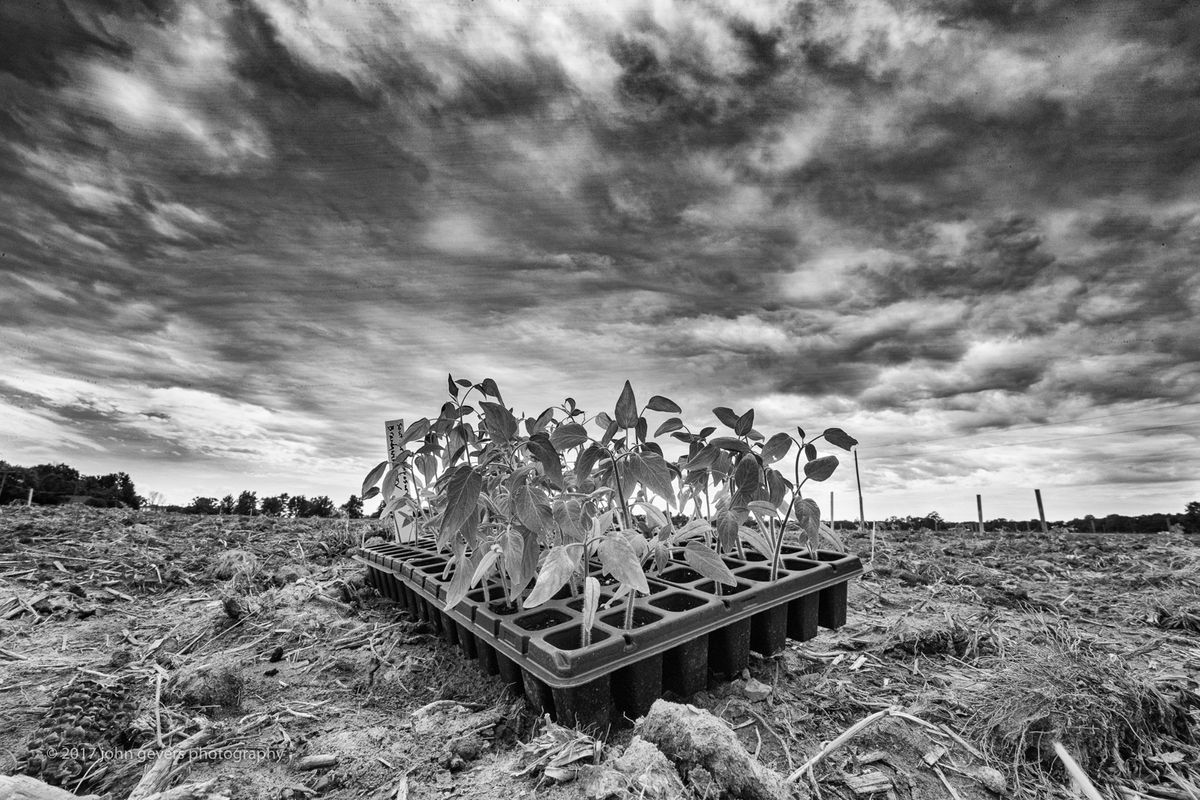(The story in this dispatch from Wood Farms in Indiana is interspersed with photographs, captions for which appear by moving your cursor or finger over each one.)
Twenty-seventeen is the year Wood Farms experiments with adding organically grown produce to its already ambitious production cycles of growing organic hay and raising antibiotic-free, non-GMO Angus cattle.
Farmhand Cathy Bartz began the produce endeavor last winter by researching what it takes to garden organically on a large scale. You don’t have a real sense of how large an acre is until you stand at a corner of a freshly tilled, blank acre of soil and contemplate hand planting it. And watering it. And weeding it. And harvesting from it. All of which pretty much means being bent at the waist or crouching on the ground for long periods of time.
But since much of what Wood Farms grows this first year is earmarked for use at BRAVAS restaurant and its food trucks, a full acre of the good stuff makes sense.





























